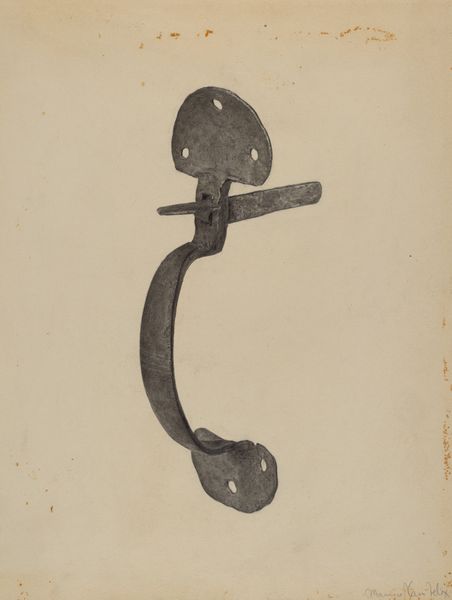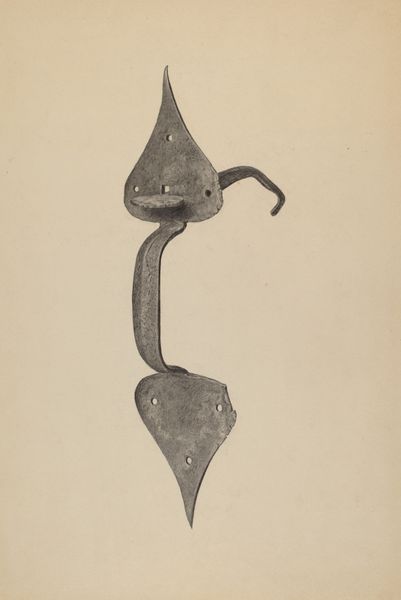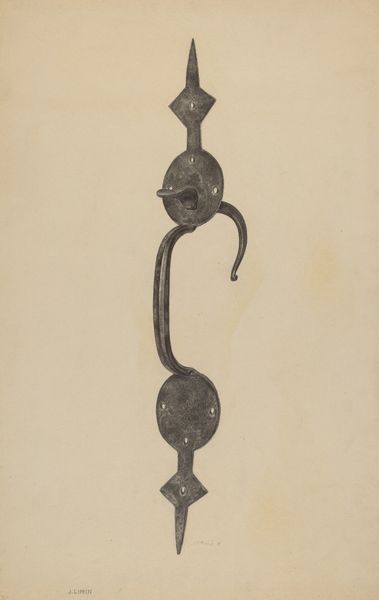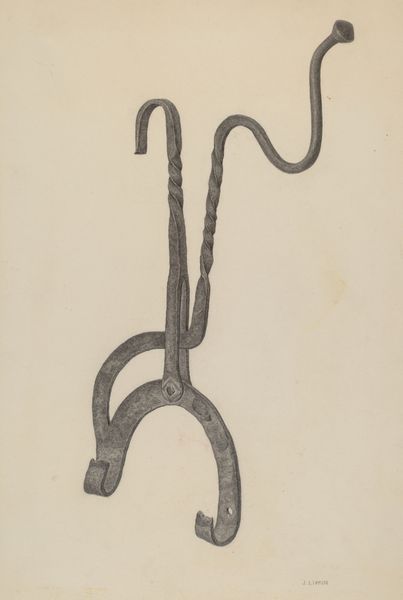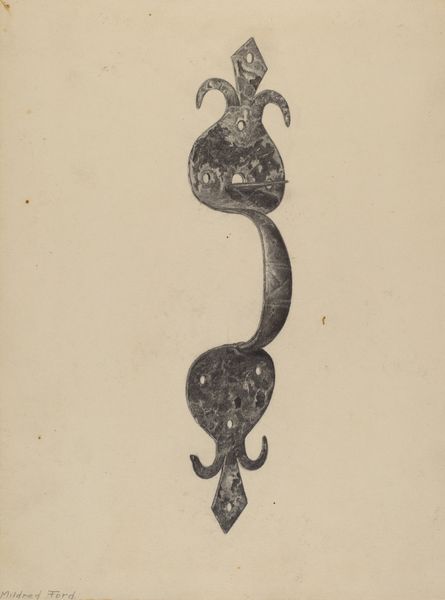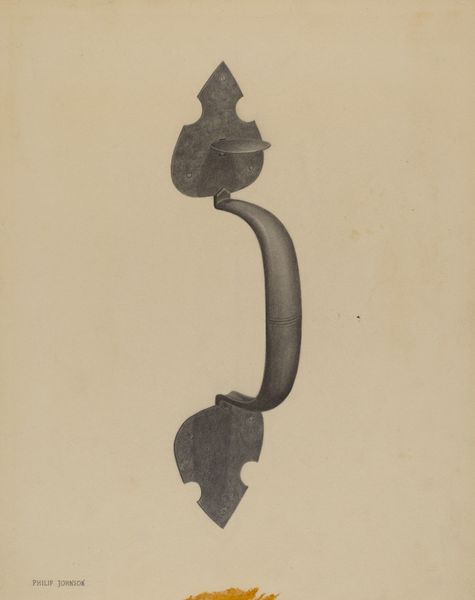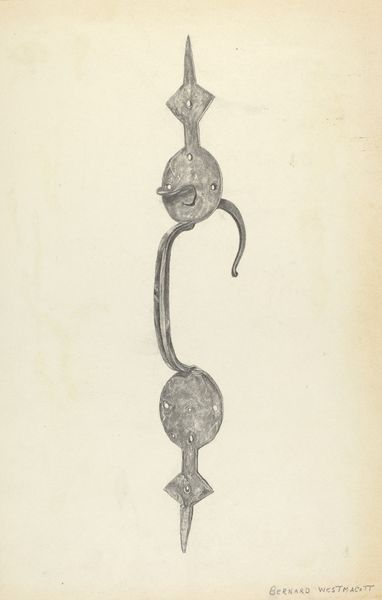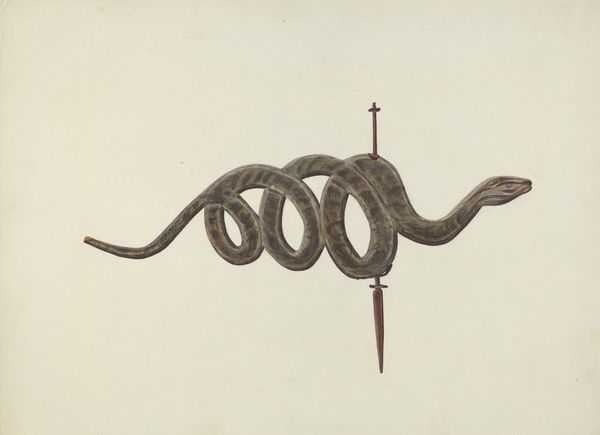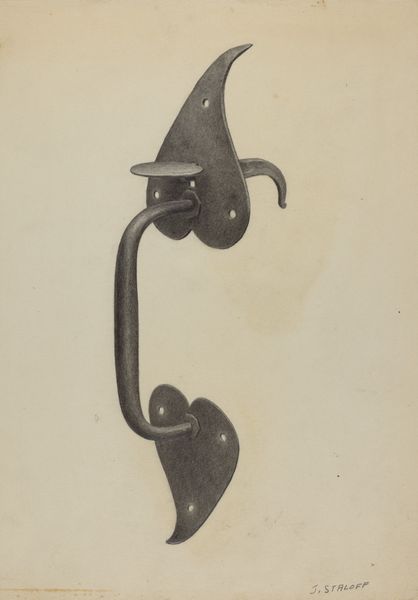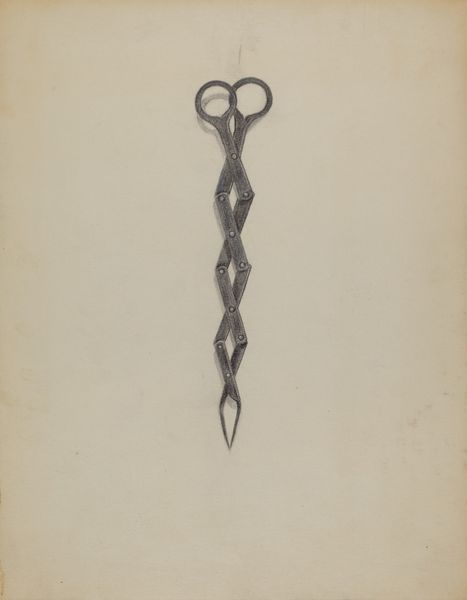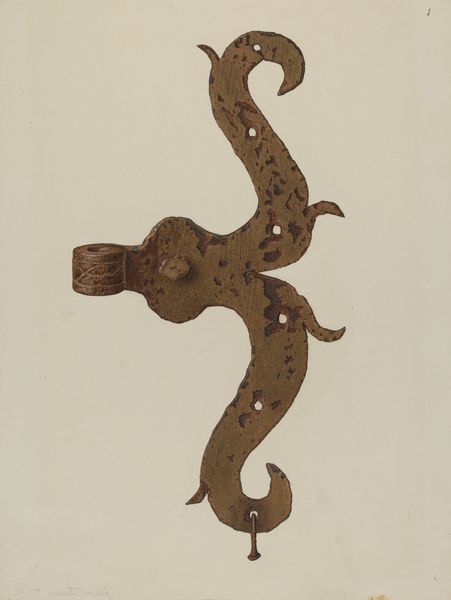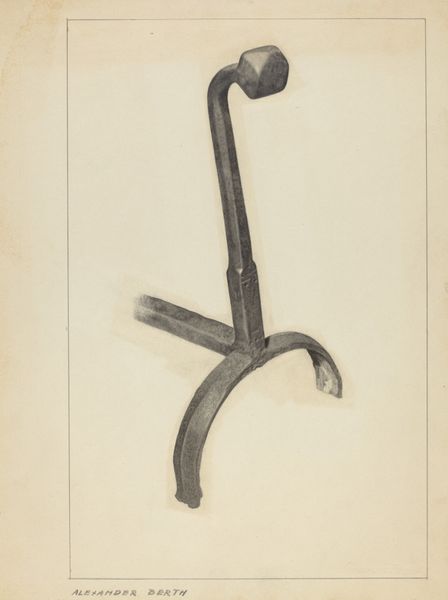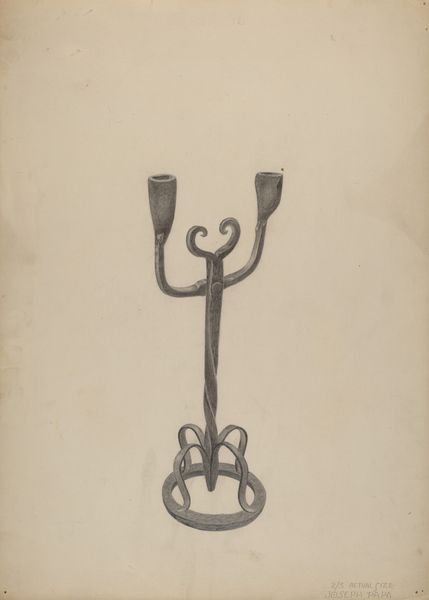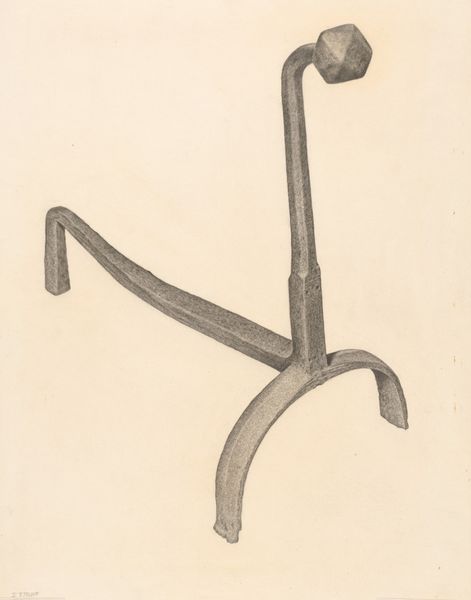
drawing, paper, graphite
#
drawing
#
paper
#
pencil drawing
#
graphite
#
academic-art
Dimensions: overall: 28.9 x 22.5 cm (11 3/8 x 8 7/8 in.) Original IAD Object: 15" long; 6 1/4" wide
Copyright: National Gallery of Art: CC0 1.0
Editor: This is "Pa. German Butt of Side Hinge" by Mildred Ford, around 1938, rendered in graphite on paper. It's a beautifully detailed drawing; I'm struck by how much it feels like a blueprint or technical illustration. What's your perspective on this piece? Curator: A blueprint perhaps, but also more than that. Notice how the artist has paid particular attention to the play of light and shadow. Consider how the subtle gradations in tone describe the three-dimensional form of the hinge. Editor: I see what you mean; it's not just a flat representation. But why make such a detailed drawing of something so utilitarian? Curator: Exactly. Consider the form itself: the elegant curves, the deliberate asymmetry, the almost organic quality of the metalwork. Ford isn't merely documenting a functional object; she's isolating and celebrating its aesthetic qualities. Are you familiar with formalism? Editor: I think so…focusing on the elements of art itself? Curator: Precisely. What matters is the formal relationship between lines, shapes, textures…the *internal* logic of the artwork. Consider how the artist frames the central form with generous negative space. This composition, this treatment of line and tone, transcends the hinge's functional purpose. Editor: So, you’re saying it doesn't matter that it’s a hinge from Pennsylvania Dutch country; it’s more about the lines and shadows? Curator: I am suggesting the essence of art is visual form. I wonder how can we consider art outside context? It is the artist intention to call attention to visual composition that moves it outside utilitarian purpose and brings aesthetic intention. I wonder. Editor: That gives me a totally new way to look at this kind of drawing, beyond just documentary! I focused too much on it *being* a hinge, and not enough on what Ford *did* with it. Curator: It offers a lesson about seeing, and the power of close observation.
Comments
No comments
Be the first to comment and join the conversation on the ultimate creative platform.
